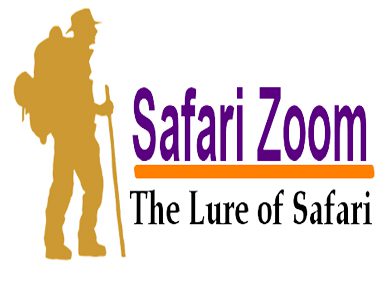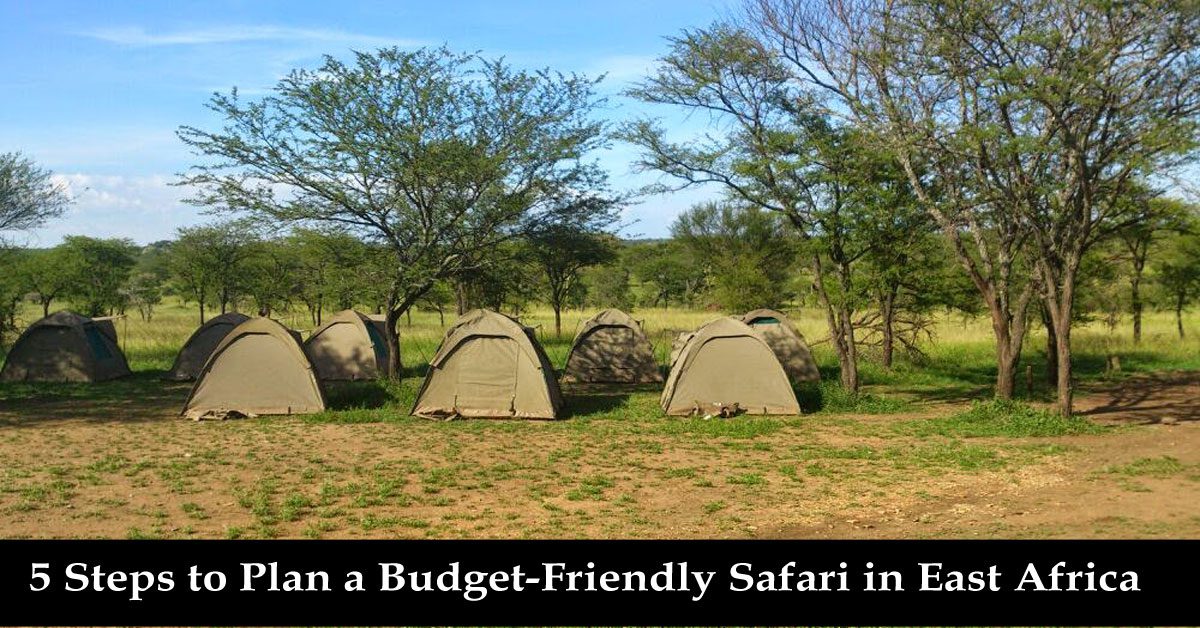The Magic of East African Safaris
If you’ve ever dreamed of watching lions prowl through the savannah, elephants bathe in watering holes, or wildebeests stampede across endless plains, East Africa is where those dreams come to life. Countries like Kenya, Tanzania, Uganda, and Rwanda are bursting with breathtaking landscapes, diverse cultures, and incredible wildlife encounters. But for many, the thought of a safari immediately conjures up images of luxury lodges, expensive 4×4 vehicles, and a budget that only affluent could afford.
Here’s the good news — you don’t need to be rich to experience an unforgettable safari adventure. With smart planning, a little research, and the right timing, you can have an authentic East African safari without draining your wallet. The trick lies in knowing where to go, when to travel, and how to make the most of your money.
Think of this guide as your safari playbook. If you’re a solo traveler, a backpacker, or a couple seeking adventure, we’ll walk you through five essential steps to plan a budget-friendly safari that balances thrill, comfort, and affordability. You’ll learn how to pick destinations that offer the most value, when to visit for great weather and lower prices, how to find cheap but comfortable accommodations, and how to save on transport and activities.
By the end, you’ll realize that an East African safari isn’t an unattainable dream — it’s an adventure waiting to happen, even on a modest budget. So grab your notebook, a cup of tea, and let’s map out your journey to the heart of Africa.
Step 1: Choosing the Right Safari Destination
Selecting the right destination is the foundation of your safari budget. East Africa offers a wealth of options, each with its own highlights, price ranges, and unique wildlife experiences. While Kenya and Tanzania are the region’s most famous safari hubs, Uganda and Rwanda offer equally rewarding yet often more affordable alternatives — especially for travelers eager to track gorillas or chimpanzees.
Kenya – The Land of the Great Migration
Kenya is perhaps the quintessential safari destination, and for good reason. The Masai Mara National Reserve hosts the legendary Great Migration, where millions of wildebeests and zebras cross from Tanzania’s Serengeti each year. But beyond the Mara, Kenya offers budget-friendly gems like Amboseli National Park, known for its majestic elephant herds and Mount Kilimanjaro backdrop, and Lake Nakuru, where flamingos paint the lake pink.
Budget travelers can take advantage of community conservancies, such as Ol Pejeta and Mara Naboisho, which provide cheaper park fees and community-run lodges that directly benefit local tribes. Additionally, Kenya has a well-developed transport network and plenty of mid-range accommodations, allowing you to experience world-class safaris at a fraction of the cost of luxury packages.
Tanzania – Home to Serengeti and Ngorongoro Crater
If Kenya is the gateway to African safaris, Tanzania is its grand cathedral. The Serengeti National Park is a wildlife wonderland, famous for its vast plains and dramatic predator-prey encounters. Meanwhile, the Ngorongoro Crater offers a unique ecosystem packed with lions, rhinos, elephants, and hippos — all visible within a single day’s drive.
For budget-conscious travelers, Tanzania provides multiple park options. The Tarangire and Lake Manyara National Parks are less crowded and often cheaper to enter. You can also reduce costs by joining group tours, camping instead of staying in lodges, or opting for public campsites managed by the Tanzania National Parks Authority (TANAPA).
Though park fees in Tanzania are generally higher than Kenya’s, the overall experience is richer, and there are more opportunities for overland safaris that combine multiple parks at a discounted rate.
Uganda and Rwanda – Gorilla Tracking on a Budget
Uganda and Rwanda are smaller but equally captivating safari destinations, especially for travelers keen on primate tracking. Trekking through misty jungles to see mountain gorillas in their natural habitat is one of the most awe-inspiring wildlife encounters you can experience. While Rwanda’s Volcanoes National Park offers a more organized and accessible experience, Uganda’s Bwindi Impenetrable Forest is often more budget-friendly, with permits costing less.
Beyond gorillas, Uganda’s Queen Elizabeth National Park and Murchison Falls National Park offer classic savannah safaris with lions, hippos, and elephants — often with cheaper park fees and accommodation options compared to their East African neighbors.
Comparing Costs Across East African Countries
|
Country |
Average Daily Safari Cost (Budget) |
Park Entry Fees (Avg) |
Best For |
|---|---|---|---|
|
Kenya |
$100–$150 |
$60–$80 |
Classic safaris, Big Five, Great Migration |
|
Tanzania |
$120–$180 |
$70–$100 |
Diverse ecosystems, Serengeti & Ngorongoro |
|
Uganda |
$80–$130 |
$40–$60 |
Gorilla tracking, river safaris |
|
Rwanda |
$100–$160 |
$50–$70 |
Gorillas, compact travel routes |
Choosing where to go depends on your interests and budget flexibility. For instance, if you’re chasing the Great Migration, Kenya or Tanzania are unbeatable. But if you want fewer crowds and unique wildlife experiences, Uganda or Rwanda may offer better value.
Step 2: Picking the Perfect Time to Travel
Timing can make or break your safari budget. East Africa’s seasons dramatically affect prices, wildlife movement, and even road accessibility. While most travelers rush to book during peak months, savvy travelers know that the “shoulder” and “green” seasons often offer huge savings and equally rewarding experiences.
Understanding High vs. Low Seasons
In East Africa, the high season typically runs from June to October and December to February — periods marked by dry weather, abundant wildlife sightings, and massive tourist influx. Lodges and park fees are at their peak during these months.
The low or green season falls between March to May and November, when rains refresh the landscapes, and prices drop by up to 40%. While heavy rains can make certain roads muddy and some parks harder to access, this season also brings lush greenery, dramatic skies, and fewer tourists — ideal for photographers and those seeking solitude.
Best Months for Wildlife Viewing and Budget Savings
If you want the best of both worlds — great wildlife viewing and moderate prices — consider traveling during shoulder seasons, such as May–June or October–November. In these months, wildlife is still active, and you can enjoy lower accommodation rates and flexible tour packages.
For example:
Weather Considerations and Crowd Levels
The East African climate varies slightly by country but generally follows similar wet and dry patterns. If you’re on a budget, avoid Christmas and Easter holidays, when accommodation prices soar. Traveling just before or after these peaks can save hundreds.
Moreover, visiting during the green season gives you the added bonus of seeing baby animals, dramatic thunderstorms, and vibrant landscapes — a side of Africa many tourists miss.
Step 3: Selecting Affordable Accommodation
Accommodation is often the second-largest expense after park fees, but the good news is that East Africa offers a variety of lodging options for every budget. Whether you’re a backpacker looking for basic comfort or a couple seeking affordable romance under the stars, there’s something for you. The key is to research early, compare prices, and stay flexible with your choices.
Budget Lodges, Campsites, and Hostels
If you’re looking to stretch your safari budget, budget lodges and campsites are your best friends. These accommodations offer clean, safe, and often scenic spots to rest after a long day in the bush. In many national parks, you’ll find public campsites that cost anywhere from $10 to $30 per night, allowing you to sleep under Africa’s starry skies for the price of a meal.
Hostels are also becoming more popular in safari gateway towns like Arusha (Tanzania), Nairobi (Kenya), and Kampala (Uganda). They often provide dorm rooms, communal kitchens, and a chance to meet other travelers who might want to share transport costs or join a group tour.
If you prefer a bit more comfort, budget safari lodges or tented camps offer private rooms with en-suite bathrooms and sometimes even Wi-Fi, all while maintaining an authentic African vibe. Prices range from $40 to $80 per night, depending on location and season.
A pro tip: always check if the lodge includes meals or game drives in the price. Some places advertise low room rates but charge extra for essentials like breakfast or transport to the park.
Advantages of Booking Local Guesthouses
While international booking sites are convenient, they often list properties that cater to Western tourists — meaning higher prices. On the other hand, local guesthouses and homestays can provide both affordability and a richer cultural experience.
Staying in a locally owned guesthouse supports the community and allows you to experience authentic East African hospitality. Many guesthouses offer home-cooked meals, local travel advice, and opportunities to interact with residents who can recommend hidden gems nearby.
In Kenya and Tanzania, guesthouses typically charge $20–$50 per night, and some even organize budget-friendly day trips or safaris at discounted rates. You’ll also find eco-lodges run by local cooperatives that prioritize sustainability and affordability — perfect for travelers who want to give back while exploring.
How to Find Safari Packages with Lodging Discounts
Booking a safari package that includes accommodation, park entry, and transport can sometimes be cheaper than paying for each separately. Many local tour operators offer group safaris, where costs are shared among travelers, drastically reducing the overall expense.
Look for deals on platforms like SafariBookings, Viator or GetyourGuide Better yet, contact local operators in Nairobi, Arusha, or Kampala — they often have flexible pricing and can customize itineraries to fit your budget.
Joining travel forums or Facebook groups such as Backpacking Africa or Travel East Africa can also help you find trustworthy operators and shared trips. Be sure to read reviews before paying any deposits, and always ask for a detailed cost breakdown to avoid hidden fees.
Safety and Comfort Tips for Budget Travelers
Budget doesn’t mean unsafe. Many affordable accommodations maintain strict hygiene and security standards. Still, it’s wise to follow some best practices:
For female travelers, many guesthouses offer female-only dorms or private rooms, providing an extra layer of comfort and security.
Ultimately, your lodging choice should balance cost, comfort, and proximity to safari parks. A bit of research and flexibility can help you find a cozy, affordable place to recharge between adventures.
Step 4: Saving on Safari Transportation
Transportation costs can sneak up on you quickly, especially if you’re traveling between parks or countries. But with smart planning, you can navigate East Africa without breaking the bank. Whether you’re hopping on public buses, joining a group tour, or renting a car, there are plenty of ways to save.
Group Safaris vs. Private Safaris – Which Saves More?
A private safari offers exclusivity, flexibility, and personal attention — but it comes at a premium. Prices typically start around $200 per person per day, depending on the vehicle and guide.
By contrast, group safaris bundle travelers together, sharing the cost of guides, park fees, and fuel. This can cut expenses by 30–50%. Many operators in Nairobi and Arusha organize shared 3- or 5-day trips that include transport, meals, and accommodation.
While group safaris may have fixed itineraries, they are an excellent option for solo travelers or couples looking to save. Plus, meeting other travelers can make the journey more enjoyable and social.
Public Transport Options for Safari Goers
If you’re truly adventurous, public transport offers an ultra-budget alternative. East Africa has an extensive network of buses, minibuses (matatus in Kenya), and motorbikes (boda bodas) that connect towns and park gates.
For example, you can take a bus from Nairobi to Narok (gateway to Masai Mara) for less than $10, then hire a shared vehicle to enter the reserve. Similarly, buses from Arusha to Karatu or Kampala to Murchison Falls are affordable and reliable.
However, public transport rarely enters deep into national parks, so you’ll still need to arrange local transport for game drives. Combining public travel between towns with budget safari operators near park entrances can significantly reduce overall costs.
Car Rentals and Self-Drive Safaris – Pros and Cons
For independent travelers, renting a car for a self-drive safari offers flexibility and adventure. You can explore at your own pace, stop whenever you want, and save on guide fees.
Car rentals in East Africa range from $60–$200 per day for a basic 4×4. However, you’ll also need to budget for fuel, park entry, and possible insurance add-ons. Make sure the vehicle is well-maintained and equipped with a spare tire, jack, and GPS or offline map app like Maps.me.
If you prefer a more comfortable and reliable option, consider booking airport transfers or private drivers through Welcome Pickups. They offer safe, pre-booked rides with professional local drivers, perfect for travelers who want a stress-free start or end to their safari journey.
That said, self-driving isn’t for everyone. Some roads, especially during the rainy season, are rough and poorly marked. If you’re unfamiliar with off-road driving, it might be safer — and often more relaxing — to hire a local driver through trusted services like Welcome Pickups for a small daily fee.
Tips to Get Cheap Domestic Flights or Bus Deals
For longer routes — such as traveling from Nairobi to Arusha or from Entebbe to Kigali — consider budget airlines like Jambojet, Flightlink, or Precision Air, which often have flash sales. You can also use trusted flight comparison platforms like Aviasales to find and compare the cheapest flight options across multiple airlines in real time. It’s an excellent tool for travelers who want to stretch their budget and score last-minute discounts.
Alternatively, intercity buses like Modern Coast, Tahmeed, Riverside Shuttle Bus Service, and Mash Poa offer comfortable, affordable journeys between major cities, with sleeper options for overnight travel.
To save even more:
Step 5: Planning Activities and Permits Wisely
The magic of a safari lies not just in the wildlife, but in the experiences — the sunrise game drives, the cultural village visits, and the river cruises at dusk. Yet, costs can spiral quickly if you’re not strategic. Smart travelers know how to prioritize, plan ahead, and mix paid and free activities for maximum adventure.
Prioritizing Must-See Parks and Activities
East Africa is home to dozens of parks, but you don’t have to visit them all. Focus on two or three main parks that align with your interests and budget. For example:
Instead of cramming multiple parks into one trip, spend more time in fewer locations. This approach saves on transportation, entry fees, and fatigue — while giving you deeper, more meaningful encounters.
How to Save on Park Entrance Fees and Permits
Park fees can be steep, ranging from $40 to $100 per day for non-residents. However, there are smart ways to cut costs:
For gorilla or chimpanzee trekking, book permits early through official channels — and keep an eye out for seasonal discounts (Uganda sometimes offers reduced rates during low season).
Mixing Free or Low-Cost Adventures with Paid Safaris
Balance your itinerary by mixing paid park visits with free cultural or nature activities. Many local communities offer:
These experiences enrich your trip without straining your budget — and often end up being just as memorable as a big game drive.
The Value of Hiring Local Guides
While hiring a guide might seem like an extra cost, it can actually save you money and enhance your experience. Local guides know where to spot animals, negotiate better park rates, and prevent costly mistakes like taking the wrong route or violating park rules.
Many national parks have community-based guide programs where local residents offer tours for as little as $10–$20 per day. Not only does this support local livelihoods, but it also gives you an authentic insight into East African culture and wildlife behavior.
Additional Tips to Maximize Your Safari Budget
Even after planning your destinations, transport, and accommodations, there are still clever ways to trim your costs and stretch your dollar. These small tweaks can add up to hundreds in savings — and the best part is, they don’t compromise the quality of your experience.
Packing Essentials to Avoid Unnecessary Spending
Packing smart is one of the easiest ways to avoid surprise expenses once you’re on the road. Safari towns often charge premium prices for essentials, so bring everything you’ll likely need from home or from larger cities before you head into the bush.
Here’s a checklist of must-have items that can help you save:
By packing wisely, you’ll avoid overpriced lodge shops and be prepared for any situation — from a flat tire to a surprise rainstorm.
Managing Food and Drink Expenses
Food can quietly eat into your budget, especially in remote areas where lodges have a monopoly on dining options. Here’s how to cut those costs without missing out on great local flavors:
In cities like Nairobi, Arusha, or Kampala, you can find local restaurants serving excellent meals for under $5–$10, so indulge there and save the splurges for the special dinners in the wild.
Using Travel Apps and Local Deals for Extra Savings
Technology is your budget travel ally. Use travel and booking apps to compare prices, find last-minute deals, and navigate the region efficiently. Some useful tools include:
You can also download local discount apps that feature restaurant or hotel deals, especially in Nairobi or Kigali. Joining traveler WhatsApp groups or local Facebook communities can connect you with others sharing rides or group safari deals — a fantastic way to save money while meeting like-minded adventurers.
Common Mistakes First-Time Safari Travelers Make
A safari can be the trip of a lifetime — but if you’re new to it, small missteps can lead to big headaches and unexpected costs. Avoiding these pitfalls ensures you enjoy your experience without stress or overspending.
Overpacking and Overspending
First-time safari travelers often overpack, thinking they’ll need a new outfit or gadget for every situation. In reality, East Africa’s climate and lifestyle call for simple, versatile clothing and minimal gear.
Excess luggage not only makes traveling harder but can also increase baggage fees on domestic flights or buses. Stick to one medium-sized backpack or suitcase and focus on lightweight, quick-drying items.
Another common trap is overspending on luxury upgrades — whether it’s an unnecessary hot-air balloon ride or a five-star lodge that eats half your budget. While those experiences are wonderful, remember that the magic of a safari lies in the wildlife, not the price tag. You can enjoy the same sunrise, the same lion sightings, and the same sunsets as someone paying ten times more.
Ignoring Local Travel Regulations
Each East African country has its own set of travel rules, park regulations, and border requirements. Not being aware of these can lead to fines or delays. For instance:
Also, ensure you have valid travel insurance that covers medical emergencies and activities like hiking or safaris. It might seem like an extra cost but can save thousands in unexpected situations.
Not Accounting for Hidden Safari Costs
Many travelers underestimate the “hidden” costs that come with safaris. Beyond park entry and lodging, you might encounter fees for:
The best approach is to request a complete itemized quote from your safari operator before confirming. A transparent breakdown helps you compare offers and avoid surprise charges once you’re in the bush.
Sustainable Travel and Supporting Local Communities
Budget travel doesn’t mean being careless with nature or local culture. In fact, traveling responsibly often saves you money while ensuring that your visit benefits the communities you meet and the environment you explore.
How Budget Travelers Can Make a Positive Impact
You don’t have to donate thousands to make a difference — small actions matter. Choose to buy souvenirs directly from artisans instead of tourist shops. Eat at family-run restaurants. Stay in lodges that employ local staff and use eco-friendly practices.
When visiting villages, always ask before taking photos, and offer a small tip or purchase a local product in return. By being respectful and mindful, you’ll create meaningful interactions and help sustain tourism-based livelihoods.
Choosing Eco-Friendly Operators
When booking your safari, look for eco-certified or community-based tour operators. Many of these companies reinvest part of their profits into conservation and education projects. Examples include Basecamp Explorer (Kenya) and Responsible Travel (Tanzania), both of which provide affordable and sustainable options.
Ask your operator about their environmental policies — do they minimize plastic use, support local rangers, or promote cultural exchange? Choosing such operators ensures your money contributes to protecting the very wildlife you came to see.
Ethical Wildlife Viewing Practices
The essence of a safari lies in respecting nature. Always maintain a safe distance from animals, avoid loud noises, and never interfere with wildlife behavior. Following ethical guidelines ensures animal welfare and the long-term survival of East Africa’s ecosystems.
For photographers, remember: patience beats proximity. Waiting quietly yields better, more natural shots — and your guide will appreciate your respect for the animals.
Final Thoughts: Turning Your Safari Dream into Reality
Planning a safari in East Africa on a budget may seem daunting at first, but with the right strategy, it’s absolutely achievable. From choosing affordable destinations and timing your trip wisely to selecting budget lodges and group safaris, every decision you make can bring you closer to your dream adventure without emptying your wallet.
Remember, a safari isn’t about luxury — it’s about connection. Connection with nature, with local people, and with the raw, untamed beauty of Africa. You don’t need to spend thousands to witness elephants strolling through the savannah, or to feel the ground rumble beneath a lion’s roar.
By traveling smart, sustainably, and with an open heart, you’ll return home richer in memories and stories than any expensive lodge could ever offer. So, pack light, plan smart, and prepare for an adventure that will stay with you forever — because your first East African safari is only the beginning.
FAQs
1. What’s the cheapest time to go on a safari in East Africa?
The most affordable months are during the green or low season — from March to May and November. Prices drop significantly, and you’ll enjoy fewer crowds, though some rains may occur.
2. Can I do a safari without booking a tour operator?
Yes! You can plan a self-drive safari or hire a local guide at the park gate. However, for first-time travelers, booking a budget-friendly group safari is usually easier and safer.
3. How much should I budget for a week-long safari?
A realistic budget for a week in East Africa is around $800–$1,200, covering accommodation, park fees, meals, and transport. Costs vary by country and travel style.
4. Is camping safe in East African national parks?
Yes, if you camp in designated areas and follow safety guidelines. Always use official campsites, avoid storing food inside tents, and listen to park rangers’ instructions.
5. What’s the best country for first-time safari travelers on a budget?
Kenya offers the best mix of accessibility, variety, and affordability, especially with options like Masai Mara, Amboseli, and Nakuru. However, Uganda is also excellent for budget-friendly and unique experiences.




